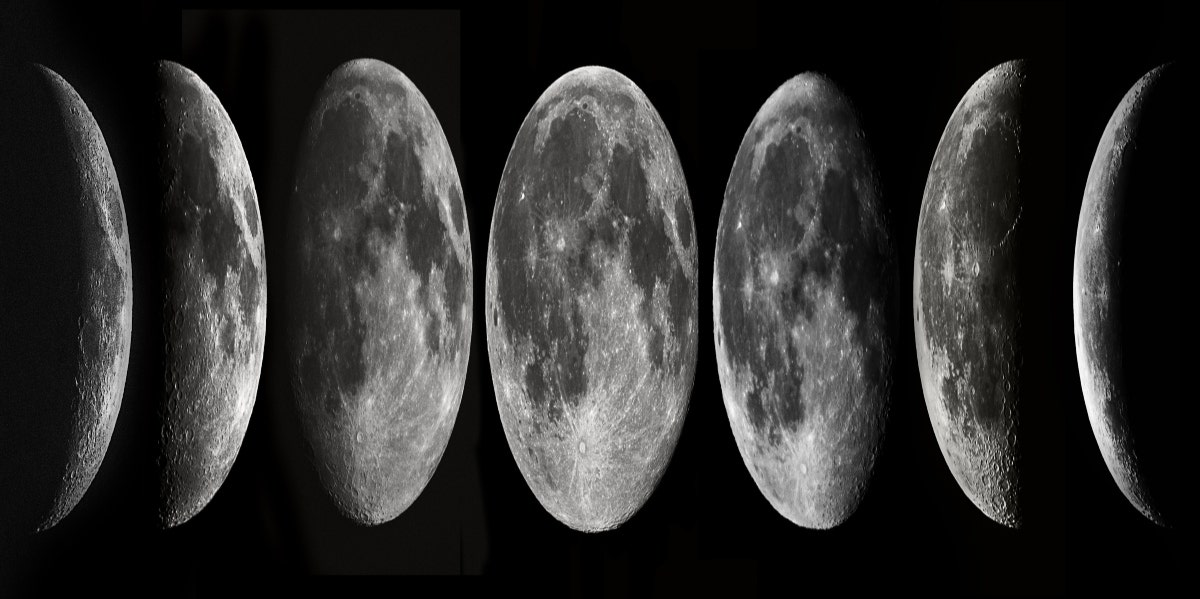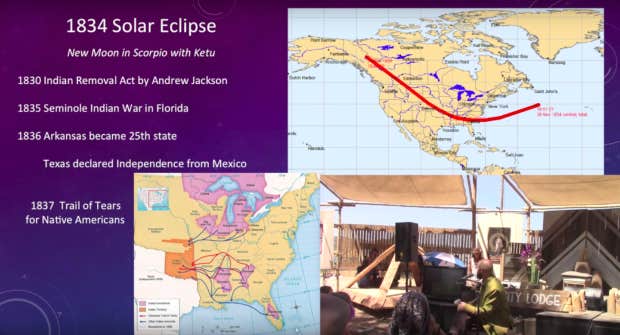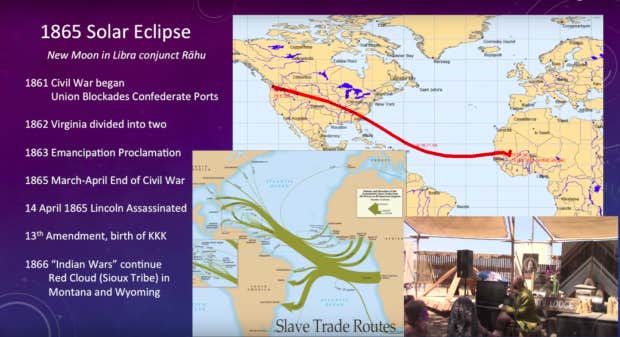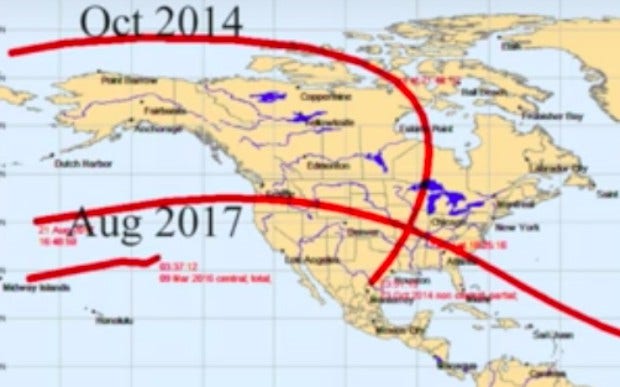Theories, Predictions & History About The August 21 Solar Eclipse In The U.S. That Are Actually Terrifying
I don't want to say we're screwed, but...
 Smart S/Shutter Stock
Smart S/Shutter Stock It's coming! If you are wondering when exactly the solar eclipse will happen, mark your calendars and set your alarms! On August 21, 2017 the United States will experience a solar eclipse.
How do you see the solar eclipse?
Exactly what you’ll see and when you'll see the eclipse near you varies (you can check out this awesome interactive map to find out the best time and place to view the eclipse based on where you live), but no matter where you are in the country (yes, even you, Alaska and Hawaii!) you’ll get a glimpse of the event.
Those who follow astrology know that the ways planets and stars move and interact with each other have an impact on our daily lives, and this astral phenomenon is no different. Each zodiac sign will feel the effects of the eclipse a little differently.
However, according to astrologer Freedom Cole (who was one of very few astrologers to predict Trump’s 2016 presidential campaign win, so keep that in mind), solar eclipses are bigger than individual people and their horoscopes. His theories and predictions taken from the history of how eclipses have impacted their paths are fascinating (and pretty scary).
Instead, where a solar eclipse has the biggest impact is on the politics and goings on in the country it passes through. The August 2017 solar eclipse, of course, cuts into one side of America and out the other. As cool as watching the experience will be, the eclipse’s path could have some devastating consequences for the U.S.
Whether you believe in astrology or not, what you’re about to learn about the effects of a solar eclipse is at least thought-provoking if not outright mind-blowing.
Okay, let’s back up a bit. What is a solar eclipse?
We’re gonna take this back to grade school science class for a second. Remember learning about how the earth orbits the sun and, likewise, the moon orbits the earth? At certain points, they all line up in a straight line. When the moon blocks sunlight from reaching the earth, that’s a solar eclipse.
Now that that’s out of the way, here’s where it gets interesting.
According to NASA, solar eclipses aren’t all that rare. They happen once every 18 months, we just don’t always see it because the paths vary in location as the planets do their thing.
According to Cole, these specific paths that the eclipses take are CRUCIAL. He explains that the eclipse lines initiate “instability, it creates change, it creates transformation. It’s generally very difficult on a country as a whole.” Areas that see a higher percentage of eclipses are more likely to be in a state of turmoil while countries who keep out of a solar eclipse’s path (like China and Russia, for example) get stronger.
Cole notes that “the energy of these eclipses show up before the eclipse even happens.” From start to finish, the August 2017 eclipse path runs straight through the U.S. It’s fair to say we’ve seen our fair share of issues here as of late… See where I’m going with this?
This isn’t the first time the U.S. is on the receiving end of a solar eclipse.
Back in 1834, an eclipse moved its way across the still-growing USA.

Take a look at its path compared to the events preceding and following the actual eclipse. Perhaps what is the most jarring is how closely the Trail of Tears follows the eclipse line.
In 1865, an eclipse line extremely similar to the one we’re seeing on the 21st crossed the U.S.

In the years before and after that, the United States faced almost a full decade of fights for equality which included a civil war and president’s assassination. Again, look at how similar the eclipse’s path is to the slave trade routes.
Creepy, right?
So what are the 2017 solar eclipse effects?
According to Cole, for the upcoming eclipse, the new moon is in Leo, the sign of “power structure, power dynamics, control” — not to mention Donald Trump’s rising sign. You don’t have to think too long or hard to see where we’ve had a huge shift in all of those things lately.
For one, the 2016 presidential election upset. The election would’ve brought a change in control no matter who won. So how did Cole know it was Trump who’d pull off the W? He used the upcoming eclipse as a hint for what was to come.
Take a look at how this month’s eclipse line crosses the path of a 2014 eclipse:

“Where they overlap becomes a powerful point of transformation,” Cole explains. This particular crosshair is right below Standing Rock, and the eclipse runs the path of the pipeline. “If Standing Rock was successful, the implications would be for years that would be the precedent. It not being successful is not a good sign.”
Yup.
The effects of the eclipse have already begun, with Standing Rock, Trump’s election, and the recent white nationalist rally in Charlottesville as just a few examples. If the past solar eclipses are any warning of what’s to come… it’s gonna be a long few years.

